Sign up to our newsletter!
Types of Acne
Knowledge of Acne Types Vital for Treatment Success
Understanding the types of acne is one of the most important information required to treat acne successfully. Most attempts at treating acne fail because of a lack of knowledge of the different types of acne.
Dermatologist have precise classification systems for acne according to type and severity. Getting the type wrong could mean lost time and wasted resources in the management of this distressing skin condition.
Dermatologist generally classify acne into mild, moderate and severe forms, or in North America, acne are even more finely classified into Grade I acne, Grade II acne, Grade III acne and Grade IV acne. The various forms of acne in terms of their physical characteristics and degree of severity can be molded to fit this classification system.
The apportioning of acne into one or the other of the above grades or degree of severity depends on the presence of a combination of factors. Such factors include:
- Presence of non-inflammatory lesions (Comedones) only
- Presence of inflammatory lesions like pustules and skin redness plus comedones
- Presence of pustules, cysts and mild to moderate scars
- Presence of cysts, nodular pustules and abscesses, with moderate to severe scarring
- Effect of the acne on the general well being of the sufferer
- Age of onset
Apart from grading of acne into grades 1 to 4 that helps to indicate severity and type, there are some rare forms of acne that develop in association with other conditions. These include acne associated with PAPA and SAPHO syndromes, acne fulminans and acne conglobata.
Another very important factor that needs to be taken into consideration for the effective treatment of acne apart from appropriate identification of the type of acne, is the patient skin type (oily skin type - gels and solutions are best used for these; and dry skin types - ointments, creams and lotions are best used in for this skin type).
Once the above two factors are identified, choosing the best treatment option (ingredient and vehicle of carriage - whether to use benzyl peroxide, antibiotic, or vitamin A derivative and whether as gel, lotion, or ointment) for the individual patient becomes easier to decide upon, with much increased likelihood of treatment success.
We shall now look at the different types of acne, both by forms and severity and see what is the best treatment option advised in current medical literature.
Acne Grades And Their Treatment Options
The following are the different grades and severity of acne and the best treatment plans and medicines for them.
Grade 1 Acne (Mild Acne)
This is the most common type of acne. It is usually seen in the first few months of development of acne or pimples.
Grade 1 acne is made up of a few crops of comedonal, non-inflammatory acne, characterized by open or closed comedones.
This form of acne is well defined by whiteheads or blackheads, in a few crops consisting of one to 15 acne either densely or scantily spread on the face, and or back, or chest. It is almost never red in appearance or painful (though very few inflammatory or red spots may be present).
Even though there are perceived as mild or grade 1 type of acne, they certainly do require treatment with all seriousness, if they are of concern to the patient.
Treatment of grade 1 acne is usually with benzyl peroxide, or topical retinoid creams like tretinoin, tazarotene or adapalene. Aleziac acid cream can also be used, so too is salicylic acid containing cream that can be bought over the counter.These medicines help control acne at this stage by preventing blockage of the sebaceous ducts that leads to comedone formation, which is the underlying problem with grade 1 and some element of grade 2 acne.
The use of antibiotic cream like erythromycin or clindamycin cream (zineryt or dalacin) is waste of time. They will not help with this type of acne.
Grade 2 Acne (Moderate Acne)
Types of acne referred to, or classified as being moderate in severity or grade 2 acne, are usually one with a blend of inflammatory changes and comedone (whitehead or blackhead), with or without a few pustules, but very little or no scaring.
The underlying processes in moderate or grade two acne are:
- Plugging of the pores in the skin referred to as hair follicles by skin flakes or keratin (leading to the formation of whiteheads or blackheads comedones)
- Growth and multiplication of the bacteria, Proprionibacterium acnes within the hair follicles, leading to inflammation or redness and pain, and in severe cases, pus formation within the blocked hair follicles
Any successful treatment of this type of acne must target these two processes.
The current guideline, is that moderate or grade 2 and some grade 3 acne, should be treated with a combination of a n agent that prevents comedones formation and an antibiotic.
Gels and creams containing a combination of benzyl peroxide or a retinoid like adapalene plus an antibiotic will be an excellent agent for the treatment of moderate acne.
If your acne is grade 2 or early grade 3 and have tried various agents that are not working for you, a combination of an oral antibiotic like lymecycline and epiduo gel used for 6 to 12 months should be effective in clearing off most acne in this grade. You should normally notice an improvement after 4 weeks. If you start seeing results, stick to this treatment for at least 6 months.
Remember to apply the gel not just to the affected spots, but to the whole of the affected part of your body, including the "normal skin".
If you are a woman of child bearing age with difficult to treat moderate to severe acne, you can also, in addition to the above treatment option, include the use of a specific type of contraceptive pill called Dianette). This pill apart from being a contraceptive pill, also help to reduce the production of sebum. if you are looking to include this option, discuss this with your doctor to ensure its suitability for you.
Grade 3 Or Moderate To Severe Acne
Any of the above types of acne can easily progress to grade 3 acne.
Grade III acne is a very severe form of the disorder, characterized by the presence of dense comedone lesions, papules, pustules, and scaring. There is also evidence of inflammation or redness of the skin and this may cause pain. Squeezing of a grade two acne can make it worse and concert that to grade 3 or even 4.
Ideally, grade three acne should be treated by a dermatologist to minimise trial and error. Where the services of a dermatologist is not easily available, a combination of an oral antibiotic and a topical retinoid should be started and used for at least 4-6 weeks, when improvements should become obvious.
If there is no change in outcome within this time frame, oral retinoids like roaccutane should be considered under expert supervision.
It is important to note that the use of roaccutane or oral isotretinoin does not treat scarring that is already established. What it does is to prevent further scar formation.
Grade 4 (Severe Acne)
Of the preceding types of acne, grade IV acne is certainly the most severe form of acne. Multiple pustules, cysts and nodular abscess formation and severe scaring characterizes this degree of acne.
This form of acne is sometimes referred to as acne papulo-pustulosa nodosa and acne conglobata.
Acne conglobata, acne fulminans, and very severe scaring from grade 3 acne fits into this group.
Is that what you suspect you have?
Treatment at this stage is best handled by a skin expert (dermatologist). Agents like roaccutane, special medications used in severe immune disease like eternacept, laser, and surgery as well as oral antibiotics may need to be deployed.
Other Forms Of Acne
Atypical types of acne exist and needs to be differentiated from the usual acne and treated accordingly. These rarer forms of acne include:
- Acne Conglobata
- Acne Fulminans
- Acne Chloracne
- Acne Excoriée
- Acne Cosmetica
- Acne Mechanica
- Infantile Acne
- Acne as part of the SAPHO syndrome (synovitis, acne, pustulosis, hyperosteosis, osteitis)
- Acne as part of the PAPA Syndrome (Pyogenic arthritis, pyoderma gangrenosium, acne)
- Gram Negative Folliculitis Acne
- Acne Rosaccea.
References:
- S2k-guideline for therapy of acne. J Dtsch Dermatol Ges. 2010 Jul;8 Suppl 2:s1-59. doi: 10.1111/j.1610-0387.2010.07466.x
- Clinical and Radiological Characteristics of SAPHO Syndrome.
- Current Rheumatology Reviews, Volume 9, Number 1, February 2013 , pp. 22-27(6)
- Management of acne. The Journal of Family Practice. January 2003 / Vol 52, No. 1.
Types of Acne: Have Your Say!
Do you suffer with acne? Are you wondering what type of acne you have and what is perhaps the best combination of medications to use? Why not take a picture of your acne in a way that does not fully show your face and post it here? We may be able to help identify your acne type.
Do you have a great idea about acne types best treatment options, we would really love to hear from you. Whatever your thoughts or ideas or queries are, please share them here!
Stay Connected
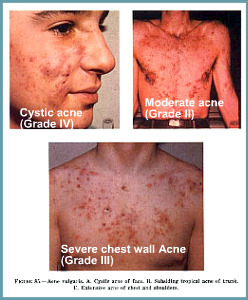
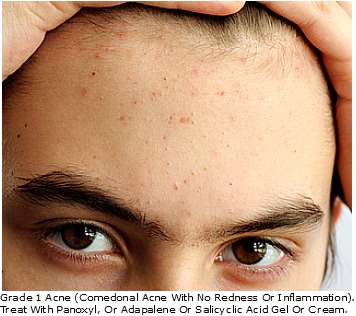
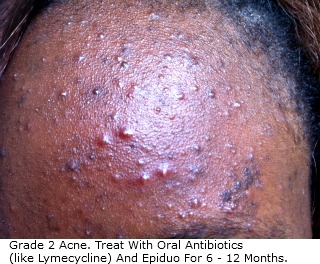
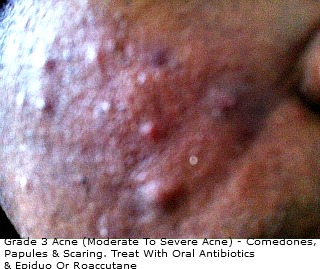
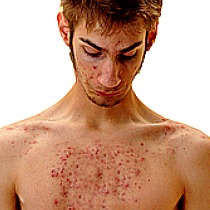
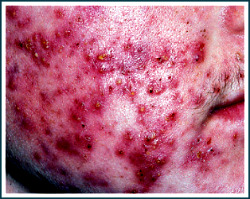






New! Comments
Have your say about what you just read! Leave me a comment in the box below.